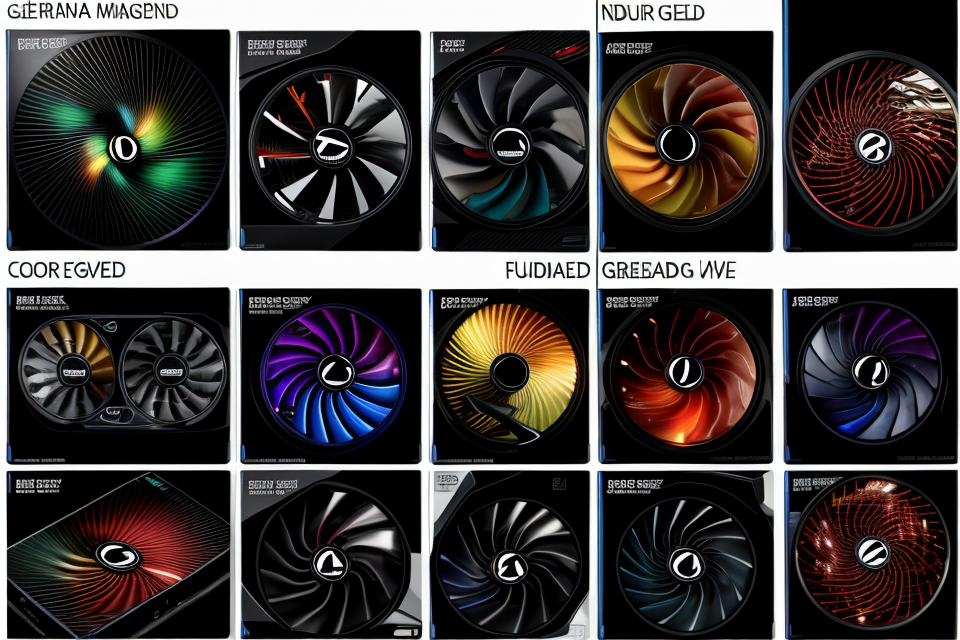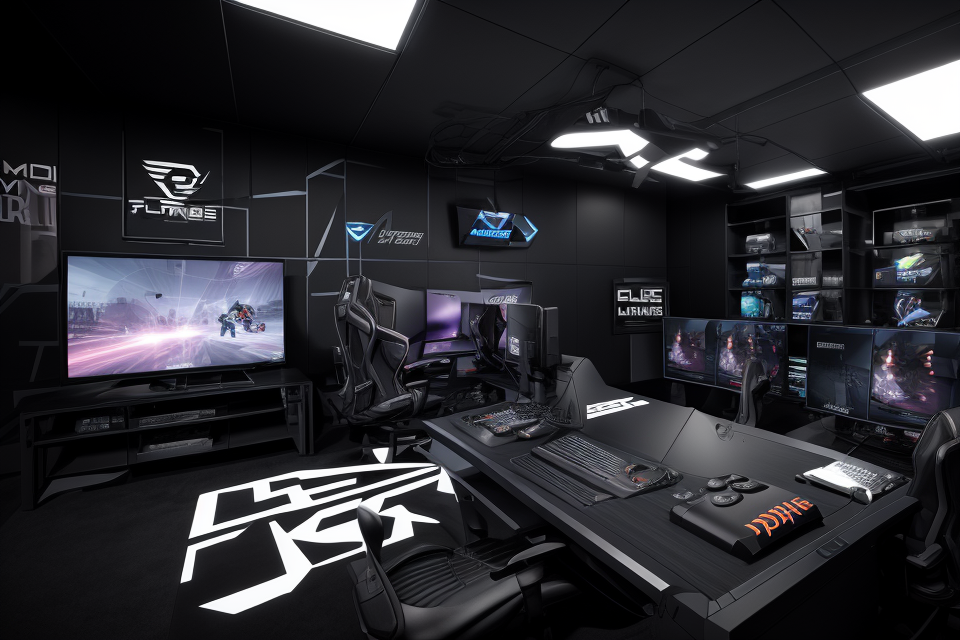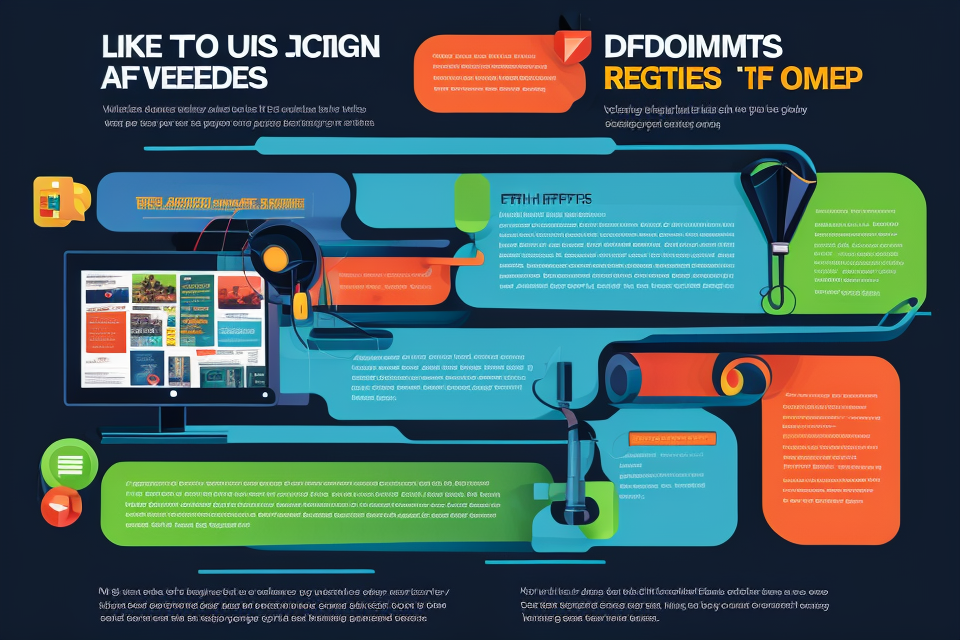
The graphics card, also known as the graphics processing unit (GPU), is a crucial component of a computer system that is responsible for rendering images and video. With the advancement in technology, the importance of a good graphics card has increased significantly, especially for gaming and professional applications that require high-quality visuals. The question that arises is whether the graphics card affects the image quality. In this article, we will explore the relationship between the graphics card and image quality, and determine the extent to which a graphics card can impact the visual fidelity of images and videos. So, let’s dive in to find out how a graphics card can make a difference in the quality of the images and videos that we see on our screens.
Understanding Graphics Card and Visual Fidelity
What is a Graphics Card?
A graphics card, also known as a video card or display card, is a hardware component designed to produce and output images to a display device. It is a specialized type of expansion card that is installed in a computer’s motherboard, specifically in the PCIe (Peripheral Component Interconnect Express) slot.
Definition and Function
The primary function of a graphics card is to render images and videos on a computer screen. It does this by processing complex mathematical calculations and rendering algorithms that translate the data into visual output. Graphics cards are designed to handle the demands of multimedia applications, such as gaming, video editing, and graphic design, by offloading the workload from the CPU (Central Processing Unit) and providing dedicated memory for graphics processing.
In addition to rendering images and videos, graphics cards also perform other functions such as managing the display settings, controlling the resolution and refresh rate, and outputting multiple displays. They also have built-in features such as CUDA (Compute Unified Device Architecture) that enable parallel processing and acceleration of specific tasks.
How it affects Image Quality
The quality of images produced by a computer depends on various factors, including the resolution, color depth, and frame rate. The graphics card plays a crucial role in determining the visual fidelity of images and videos by providing the processing power needed to render them accurately and efficiently.
A higher-end graphics card with more processing power and dedicated memory can handle more complex and demanding tasks, resulting in smoother and more realistic visuals. It can also support higher resolutions, higher color depths, and faster frame rates, resulting in sharper and more vivid images.
On the other hand, a lower-end graphics card with limited processing power and memory may struggle to handle demanding tasks, resulting in lower frame rates, lower resolutions, and lower color depths. This can lead to visible artifacts such as blurring, tearing, and ghosting, which can negatively impact the overall image quality.
In summary, the graphics card is a critical component in determining the visual fidelity of images and videos on a computer. It plays a significant role in rendering images accurately and efficiently, and its performance can have a direct impact on the quality of the visual output.
Visual Fidelity and Graphics Card
What is Visual Fidelity?
Visual fidelity refers to the accuracy and clarity of the visual representation of an image or scene. It encompasses various aspects such as color accuracy, sharpness, contrast, and overall detail. Visual fidelity is a crucial factor in various industries such as gaming, film, and photography, as it significantly impacts the user experience and the realism of the images produced.
How Graphics Card Impacts Visual Fidelity
A graphics card, also known as a GPU (Graphics Processing Unit), plays a crucial role in determining the visual fidelity of an image. The GPU is responsible for rendering images and processing graphical data, and its performance directly affects the quality of the visual output.
Here are some ways in which a graphics card impacts visual fidelity:
- Rendering Speed: A high-performance graphics card can render images faster than a lower-end card. This results in smoother animations, faster load times, and a more seamless overall experience.
- Texture and Shader Processing: Graphics cards are capable of processing complex textures and shaders, which are responsible for adding realism and detail to the visuals. A powerful GPU can handle more intricate textures and shaders, resulting in higher visual fidelity.
- Resolution and Display Quality: A graphics card’s performance also affects the resolution and display quality of an image. Higher-end cards can support higher resolutions and provide sharper, more detailed visuals.
- Anti-Aliasing and Image Refinement: Anti-aliasing is a technique used to smooth out jagged edges in graphics and provide a more refined visual appearance. A powerful GPU can perform anti-aliasing more effectively, resulting in higher visual fidelity.
- Real-Time Ray Tracing: Ray tracing is a technique used to simulate the behavior of light in a scene, resulting in more realistic lighting and shadows. A high-performance graphics card can handle real-time ray tracing, adding to the overall visual fidelity of an image.
In conclusion, the graphics card plays a significant role in determining the visual fidelity of an image. A powerful GPU with high rendering speed, efficient texture and shader processing, and support for advanced techniques like real-time ray tracing can significantly enhance the visual quality of an image or scene.
Factors Affecting Image Quality with a Graphics Card
Graphics Card Specifications
The graphics card, also known as the GPU (Graphics Processing Unit), plays a crucial role in determining the visual fidelity of images and graphics displayed on a computer screen. The specifications of a graphics card can significantly impact the quality of images rendered on the screen. In this section, we will delve into the three primary specifications of a graphics card that affect image quality: GPU Architecture, VRAM, and CUDA Cores.
GPU Architecture:
The GPU architecture refers to the design and structure of the graphics processing unit within the graphics card. Different GPU architectures have varying capabilities in terms of rendering complex graphics and images. The most common GPU architectures are NVIDIA’s CUDA and AMD’s Radeon.
CUDA (Compute Unified Device Architecture) is a parallel computing platform and programming model developed by NVIDIA for their GPUs. It enables developers to use CUDA-enabled GPUs to perform general-purpose computing tasks in addition to graphics rendering. CUDA architecture is designed to deliver high performance and scalability, making it suitable for applications that require intensive computation, such as gaming, scientific simulations, and machine learning.
On the other hand, AMD’s Radeon architecture focuses primarily on graphics rendering and is designed to deliver exceptional performance in gaming and multimedia applications. Radeon GPUs are known for their high memory bandwidth and efficient use of memory, which can result in smoother and more detailed graphics.
VRAM:
VRAM (Video Random Access Memory) is a type of memory that is dedicated to storing and processing the graphical data generated by the GPU. The amount of VRAM available on a graphics card is crucial for image quality, as it determines the amount of data that can be stored and processed simultaneously.
In general, the more VRAM a graphics card has, the higher the quality of images it can render. This is particularly important for applications that require high-resolution textures, such as 3D modeling, video editing, and gaming. When the graphics card has insufficient VRAM, it may need to rely on the system memory (RAM) to store and process graphical data, which can result in slower performance and reduced image quality.
CUDA Cores:
CUDA cores are the processing units within an NVIDIA GPU that are responsible for executing parallel computations. They are designed to perform mathematical operations in parallel, which enables the GPU to process large amounts of data efficiently. The number of CUDA cores on a graphics card can have a significant impact on image quality, particularly in applications that require complex calculations, such as 3D rendering and machine learning.
In general, graphics cards with more CUDA cores can render images faster and with greater accuracy, resulting in higher visual fidelity. However, the performance of a graphics card is not solely dependent on the number of CUDA cores, as other factors such as memory bandwidth and clock speed also play a role in determining image quality.
Graphics Quality Settings
The graphics quality settings on a graphics card play a crucial role in determining the visual fidelity of an image. These settings include resolution, texture quality, anti-aliasing, and frame rate. Let’s delve deeper into each of these factors:
Resolution
Resolution refers to the number of pixels on a screen that make up an image. A higher resolution means more pixels, resulting in a sharper and more detailed image. The graphics card’s ability to handle higher resolutions is crucial in producing high-quality images. However, it’s important to note that increasing the resolution also increases the workload on the graphics card, which may affect other graphics quality settings.
Texture Quality
Texture quality refers to the level of detail in the textures used in an image. A higher texture quality means more intricate and detailed textures, resulting in a more realistic image. However, increasing texture quality also increases the workload on the graphics card, which may affect other graphics quality settings.
Anti-Aliasing
Anti-aliasing is a technique used to smooth out jagged edges in an image. It works by interpolating colors between pixels, resulting in a more natural and smooth image. The level of anti-aliasing can be adjusted to produce different levels of smoothness. However, increasing the level of anti-aliasing also increases the workload on the graphics card, which may affect other graphics quality settings.
Frame Rate
Frame rate refers to the number of frames per second (FPS) that a graphics card can produce. A higher frame rate means smoother and more fluid movement in an image. The graphics card’s ability to handle a higher frame rate is crucial in producing high-quality images, especially in fast-paced games or animations. However, increasing the frame rate also increases the workload on the graphics card, which may affect other graphics quality settings.
In conclusion, the graphics quality settings on a graphics card play a significant role in determining the visual fidelity of an image. These settings include resolution, texture quality, anti-aliasing, and frame rate. Understanding how these settings work and how they interact with each other can help optimize image quality for any given system.
The Impact of Graphics Card on Different Games and Applications
Gaming
Graphics cards play a crucial role in gaming, as they are responsible for rendering the images that appear on the screen. The performance of a graphics card can significantly impact the visual quality of a game, including its frame rate, resolution, and overall smoothness.
In the world of gaming, there are various genres, each with its unique set of requirements for graphics cards.
First-Person Shooters
First-person shooters (FPS) are a popular genre of games that require fast-paced action and quick reflexes. These games typically involve a lot of movement and require the player to quickly respond to changing environments. As a result, graphics cards need to be able to handle high levels of complexity and detail to ensure smooth gameplay.
Role-Playing Games
Role-playing games (RPGs) are another popular genre of games that often involve large, open worlds and complex characters. These games require graphics cards to handle detailed character models, intricate environments, and special effects such as magic spells and combat animations.
Racing Games
Racing games are all about speed and precision, and the graphics card plays a critical role in rendering the high-speed action on the screen. These games require graphics cards to handle complex environments, detailed cars, and special effects such as explosions and particle effects.
Overall, the graphics card plays a critical role in gaming, and its performance can significantly impact the visual quality of the game. Whether it’s a fast-paced FPS, a complex RPG, or a high-speed racing game, a powerful graphics card is essential for an immersive and visually stunning gaming experience.
Video Editing and Graphic Design
A graphics card plays a crucial role in the world of video editing and graphic design. These applications rely heavily on the processing power of the graphics card to render high-quality images and videos. The following are some of the ways in which a graphics card can impact the quality of video editing and graphic design:
Video Rendering
Video rendering is the process of converting a series of images into a video file. This process requires a lot of processing power, and a high-end graphics card can significantly speed up the rendering process. A powerful graphics card can handle large amounts of data and complex graphics, resulting in smoother video playback and higher image quality.
Graphic Design Software
Graphic design software, such as Adobe Photoshop and Illustrator, require a lot of processing power to handle complex tasks such as image manipulation, layering, and effects. A powerful graphics card can help these applications run smoothly, allowing designers to work with larger files and more complex designs. Additionally, a high-end graphics card can also improve the overall performance of the computer, making it easier to work with multiple applications at once.
Overall, a graphics card can have a significant impact on the quality of video editing and graphic design. A powerful graphics card can help improve image quality, speed up rendering times, and make it easier to work with complex designs and large files. As a result, investing in a high-end graphics card can be a wise decision for anyone working in the world of video editing and graphic design.
Virtual Reality and Augmented Reality
Graphics cards play a crucial role in determining the visual fidelity of virtual reality (VR) and augmented reality (AR) experiences. VR and AR technologies rely heavily on the graphics processing power of a computer to render immersive, high-quality graphics in real-time. As such, the performance of a graphics card can significantly impact the visual quality and responsiveness of VR and AR applications.
Headset Requirements
VR and AR headsets have specific requirements for graphics cards that must be met in order to provide an optimal experience. For example, the Oculus Rift S virtual reality headset requires a graphics card with at least 8GB of video memory and a GPU that supports DirectX 12 or later. Similarly, the HoloLens 2 augmented reality headset requires a PC with a dedicated graphics card that meets the minimum requirements for Windows Mixed Reality.
Visual Fidelity in VR/AR
The visual fidelity of VR and AR experiences is directly tied to the performance of the graphics card. A high-end graphics card can render complex graphics at high resolutions, providing a more immersive and realistic experience. Conversely, a low-end graphics card may struggle to render graphics at an acceptable level of quality, leading to a less immersive experience.
Furthermore, the graphics card’s ability to handle high levels of graphics detail can also impact the frame rate of VR and AR applications. A higher frame rate can result in smoother, more responsive movement and interaction within the virtual environment, further enhancing the overall experience.
In conclusion, the graphics card plays a critical role in determining the visual fidelity and performance of VR and AR experiences. To achieve the best possible experience, it is essential to have a graphics card that meets the specific requirements of the VR or AR headset being used.
Improving Image Quality with a Graphics Card
Upgrading Your Graphics Card
Upgrading your graphics card is one of the most effective ways to improve image quality. Here’s a step-by-step guide to help you choose the right graphics card and install it without any hassle.
Choosing the Right Graphics Card
Choosing the right graphics card depends on several factors, including your budget, the type of games or applications you want to run, and the capabilities of your computer. Some of the key specifications to consider when choosing a graphics card include:
- Memory: The amount of memory (or VRAM) on a graphics card determines how much data it can store before it needs to be accessed from the system memory. This is especially important when working with high-resolution textures or models.
- CUDA Cores: CUDA (Compute Unified Device Architecture) cores are the processing units on a graphics card that handle the complex calculations required to render images. The more CUDA cores a graphics card has, the faster it can process these calculations.
- Clock Speed: The clock speed of a graphics card refers to the frequency at which its processing units operate. A higher clock speed means that the graphics card can perform more calculations per second, resulting in smoother performance and better image quality.
Once you’ve identified the specifications that matter most to you, you can start comparing different graphics cards to find the one that best meets your needs.
Installation Process
Installing a new graphics card is a relatively straightforward process, but it does require some technical know-how. Here are the basic steps involved in installing a graphics card:
- Power off your computer and unplug it from the power source.
- Open your computer’s case and locate the PCIe slot where you want to install the new graphics card.
- Remove the retaining clip or screw that holds the PCIe slot cover in place.
- Carefully insert the graphics card into the PCIe slot, making sure that it’s seated properly and securely.
- Replace the retaining clip or screw and close the computer case.
- Power on your computer and make sure that the new graphics card is recognized by the system.
It’s important to note that the installation process may vary depending on the specific graphics card you’re installing and the type of computer case you have. Always consult the manufacturer’s instructions and follow all safety precautions when working with electronic components.
Optimizing Graphics Quality Settings
One of the key ways in which a graphics card can impact image quality is by enabling the optimization of graphics quality settings. These settings are typically found within the graphics card’s control panel or within the settings menu of the game or application being used. By adjusting these settings, users can customize the visual experience to their preferences, balancing performance and visual fidelity.
There are several ways in which graphics quality settings can be optimized:
Adjusting Graphics Settings for Different Games and Applications
Each game or application may have its own unique graphics settings, which can affect the overall image quality. For example, some games may have settings for anti-aliasing, which smooths out the edges of objects in the game, resulting in a more visually appealing image. Other games may have settings for texture quality, which determines the level of detail in the game’s textures.
By adjusting these settings to suit the specific needs of each game or application, users can achieve the best possible image quality without sacrificing performance. This is particularly important for users who have high-end graphics cards, as they may be able to run games or applications at higher settings than those with lower-end cards.
Balancing Performance and Visual Fidelity
While adjusting graphics quality settings can improve image quality, it is important to balance performance and visual fidelity. If the graphics settings are set too high, the game or application may run too slowly to be enjoyable. On the other hand, if the settings are set too low, the image quality may be poor, resulting in a less visually appealing experience.
To find the optimal balance between performance and visual fidelity, users should experiment with different settings and monitor the performance of the game or application. This may involve adjusting settings such as resolution, texture quality, and anti-aliasing to find the sweet spot where performance and image quality are both optimized.
In conclusion, optimizing graphics quality settings is a crucial aspect of improving image quality with a graphics card. By adjusting these settings for different games and applications and balancing performance and visual fidelity, users can achieve the best possible image quality without sacrificing performance.
The Role of Graphics Card in Image Quality
The graphics card plays a crucial role in determining the image quality of a computer system. It is responsible for rendering images and videos, which involves processing complex mathematical calculations to create realistic and detailed visuals. The graphics card’s processing power, memory, and other capabilities directly impact the image quality that can be achieved.
- Increased Processing Power: A graphics card with higher processing power can handle more complex images and videos, resulting in smoother frame rates and higher image quality. This is particularly important for tasks such as gaming, video editing, and 3D modeling, where realistic and detailed visuals are essential.
- Improved Texture and Shading: Graphics cards with more memory and advanced shading capabilities can produce more detailed and realistic textures and shading in images and videos. This can create a more immersive visual experience and enhance the overall quality of the image.
- Real-Time Rendering: Many graphics cards are capable of real-time rendering, which means they can generate high-quality images and videos in real-time. This is particularly useful for applications such as virtual reality and augmented reality, where users need to experience immersive and interactive visuals.
Overall, the graphics card plays a critical role in determining the image quality that can be achieved on a computer system. By choosing a graphics card with higher processing power, memory, and advanced capabilities, users can significantly improve the visual fidelity of their images and videos.
FAQs
1. What is the role of a graphics card in image quality?
A graphics card, also known as a GPU (Graphics Processing Unit), plays a crucial role in determining the image quality of your display. It is responsible for rendering and processing the visual information that is displayed on your screen. The better the graphics card, the higher the image quality you can expect.
2. Can a low-end graphics card affect image quality?
Yes, a low-end graphics card can significantly affect image quality. A low-end graphics card may not have the processing power to handle complex visual effects, resulting in lower image quality. This can be especially noticeable when playing games or watching movies that require high levels of visual fidelity.
3. How does a high-end graphics card improve image quality?
A high-end graphics card can greatly improve image quality by providing more processing power to handle complex visual effects. This results in smoother animations, more realistic lighting, and better texture details. Additionally, high-end graphics cards often have more video memory, which allows for higher resolutions and more detailed textures.
4. Is it necessary to have a high-end graphics card for good image quality?
Not necessarily. While a high-end graphics card can greatly improve image quality, it is not the only factor that determines visual fidelity. Other factors such as the resolution of your display, the quality of your monitor, and the settings in the software you are using can also affect image quality. However, a high-end graphics card can provide a significant boost to image quality, especially for tasks such as gaming and video editing.
5. Can a graphics card affect the performance of other components in a computer?
Yes, a graphics card can affect the performance of other components in a computer. A high-end graphics card can require more power and generate more heat than a low-end card. This can put additional strain on other components such as the CPU and power supply. Additionally, a high-end graphics card may require more cooling, which can increase the noise level of your computer. It is important to consider these factors when choosing a graphics card and building a computer system.


